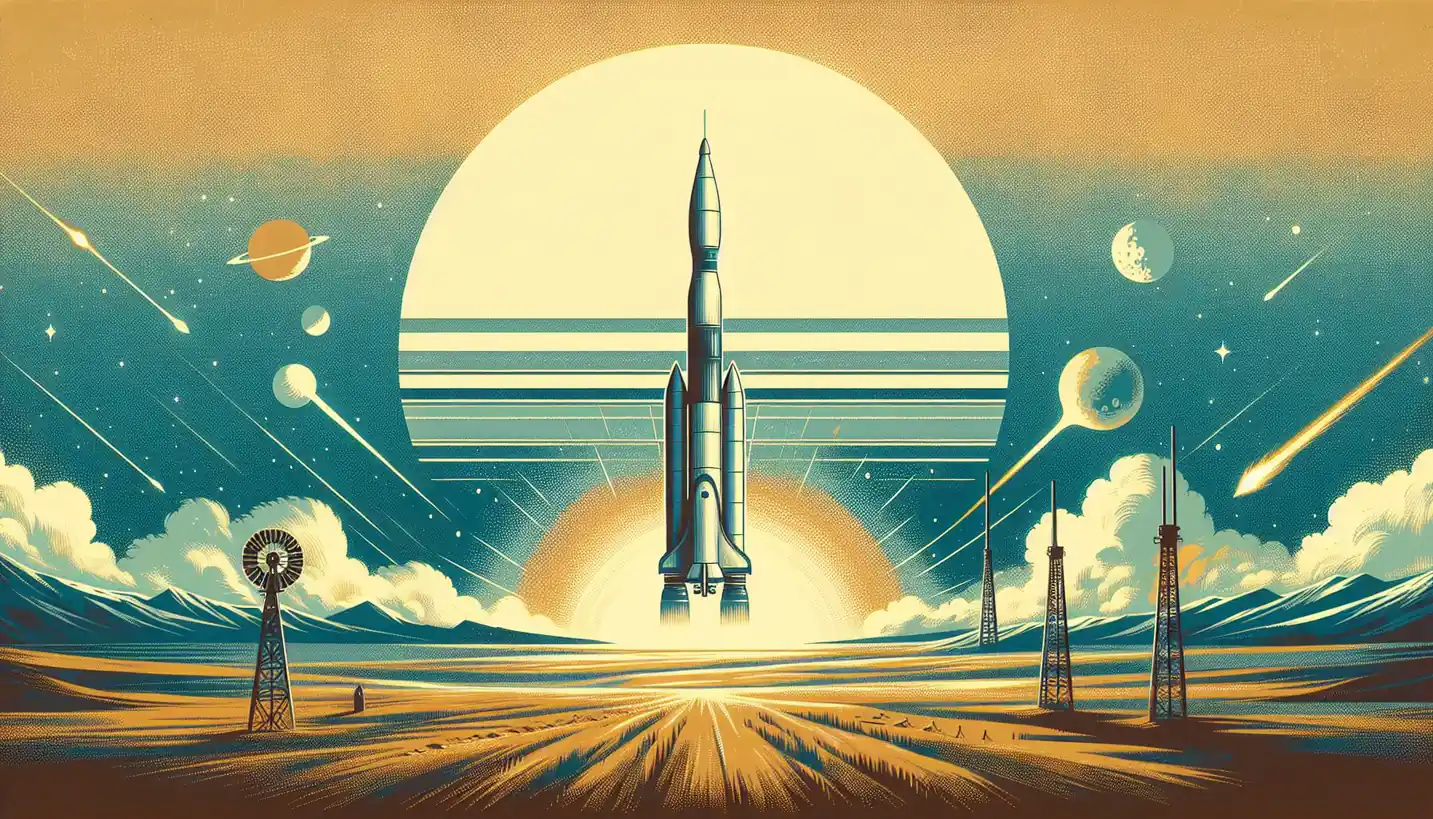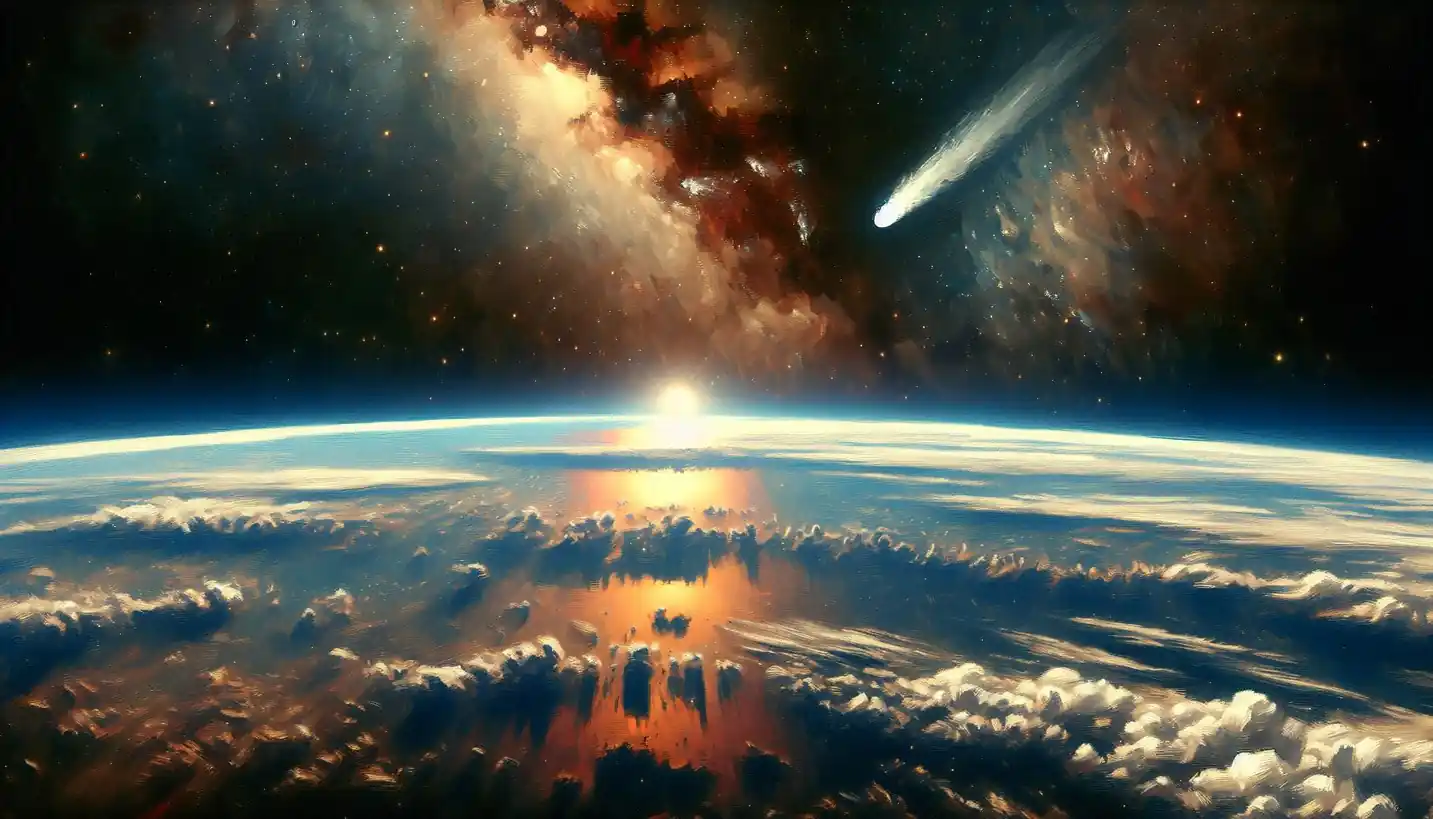· Astronomy · 5 min read
Hubble's Law: A Window into the Expanding Universe
Hubble's Law shows the universe's expansion through distant galaxies' motion. Explore this groundbreaking discovery that opens a window to cosmic history.

Once upon a time, in the 1920s, astronomers gazed into the night sky with a sense of mystery and wonder. Their curiosity led to one of the most groundbreaking discoveries in theoretical astronomy: Hubble’s Law. Named after the American astronomer Edwin Hubble, this principle opened our eyes to the astounding fact that our universe is expanding. But what exactly is Hubble’s Law, and why is it so important?
The Revelation of Hubble’s Law
Let’s start with a bit of backstory. In the early 20th century, galaxies were thought to be static, sitting still in space. Then came Edwin Hubble, who, using the powerful telescope at Mount Wilson Observatory, stumbled upon an astonishing finding. He noticed that galaxies were moving away from us, and not just randomly, but in a specific, predictable pattern. This led him to formulate what we now call Hubble’s Law.
So, what does Hubble’s Law tell us? In simple terms, it says that the farther away a galaxy is from us, the faster it’s moving away. Imagine blowing up a balloon with dots on it. As the balloon expands, the dots move away from each other. That’s a bit like how galaxies are in our universe.
The Role of Redshift
A key player in this story is something called redshift. When Edwin Hubble observed galaxies, he noticed that their light was stretched towards the red end of the spectrum. This stretching happens because the galaxies are moving away, similar to the way a police car siren changes pitch as it zooms past you. This effect, known as the Doppler effect, allows astronomers to measure how fast galaxies are receding from us.
The greater the redshift, the faster a galaxy is moving away, meaning it’s farther from us. Hubble plotted these velocities against their distances and realized there was a linear relationship – the basis of Hubble’s Law.
The Cosmic Implications
Hubble’s Law was more than just a neat observation. It had profound implications for our understanding of the cosmos. It provided strong evidence for the Big Bang theory, the idea that the universe originated from an immensely hot and dense point about 13.8 billion years ago and has been expanding ever since.
Think of it this way: if galaxies are moving away from each other now, rewind time like a cosmic film in reverse, and you’d see everything converging back to a single starting point. This viewpoint shifted the way we perceive the universe, transforming our conceptualization from a static to a dynamic, ever-growing cosmos.
The Scale of the Universe
A fascinating part of Hubble’s Law involves the Hubble Constant, a figure that represents the rate of the universe’s expansion. Determining this constant is key to understanding the scale and age of the universe. However, over time, scientists have found discrepancies in this rate, with some measurements differing slightly. This has sparked a lively debate and ongoing research in theoretical astronomy.
Why does this matter, you ask? The exact value of the Hubble Constant helps us pinpoint not just the universe’s expansion rate but also provides clues about dark matter and dark energy, the mysterious forces that make up the majority of our universe’s mass-energy content.
Story of Discovery
Let’s take a moment to appreciate Edwin Hubble’s journey. Born in Missouri in 1889, Hubble was a curious soul who initially studied law before switching to astronomy. Imagine, had he not followed his passion, we might still be in the dark about the expanding universe. Hubble’s dedication and groundbreaking work using the 100-inch Hooker Telescope were life-changing for the field of astrophysics.
His observations of Cepheid variable stars, a type of star with a well-known brightness pattern, allowed him to measure distances to galaxies far away, setting the stage for Hubble’s Law. This discovery was akin to opening a vast book full of cosmic stories waiting to be told.
Future Exploration
With Hubble’s Law as a stepping stone, the journey of cosmic exploration is far from over. Scientists continue to unveil the mysteries of the universe. What about dark energy, responsible for the accelerated expansion of the universe? This strange force remains one of the biggest enigmas in theoretical astronomy.
Is there an end to this expansion? Will the universe keep expanding forever, or will it slow and eventually collapse? These questions are at the frontier of scientific curiosity, and future projects like the James Webb Space Telescope aim to illuminate these mysteries.
The Everlasting Wonder
Hubble’s Law doesn’t just reside in the realm of mathematical equations and measurements; it tells a story of our place in the cosmos. It’s a reminder of how curiosity and persistence can unveil secrets of the incredible universe we inhabit.
So next time you look up at the stars, remember that they are moving away, and in doing so, they echo the whispers of a magnificent universe that is eternally expanding. Hubble’s Law gives us a lens to peer into the history and future of space, inviting us to dream and explore beyond our wildest imaginations. And who knows what other cosmic tales await discovery in the vast cosmos?


